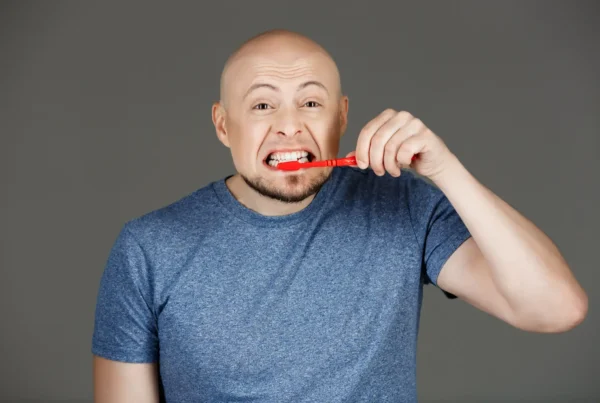Have you ever come across the term “conservative dentistry”? Or maybe you’ve more often heard the phrase “general dentistry”? Read on to learn more about what conservative dental treatment includes, what procedures it involves, and how it relates to cavity treatment – one of the most common oral health problems.
What is conservative dentistry?
Conservative dentistry, also known as general dentistry, primarily focuses on the prevention of tooth decay and the treatment of cavities. Its main goal is to maintain healthy teeth, preserve tooth vitality, and ensure good aesthetics. Routine dental checkups are the cornerstone of general dental care.
The term “conservative dentistry” refers mainly to treatments performed on adults. In contrast, the prevention and treatment of baby teeth falls under pediatric dentistry (pedodontics), which includes adaptation visits, oral hygiene education, fluoride varnishing, dental sealants, and treatment of mucosal diseases or early-stage tooth decay.
Common procedures in conservative dentistry – prevention is better than cure
General dentistry covers a wide range of procedures aimed at preventing oral diseases and treating cavities. Here are some typical services offered:
- Treatment of bleeding gums
- Silver diamine fluoride application for baby teeth
- Treatment of tooth sensitivity
- Oral and dental examinations
- Instruction on proper oral hygiene
- Full dental hygiene procedures, including scaling, air polishing, tooth polishing, and fluoride treatments
Diagnostic methods in conservative dentistry
Visual inspection of the teeth and mucous membranes, along with a thorough patient interview, is essential in conservative dentistry. Dentists often use a panoramic X-ray (orthopantomogram) to assess the entire dentition, including the extent of tooth decay and the number and shape of root canals.
Other tools used include intraoral cameras for examining interdental spaces, and diagnostic lasers to evaluate tooth spots. In some cases, CT scans or ultrasounds may be recommended.
What does cavity treatment involve?
Cavities form as a result of a long-term process – they don’t appear overnight. They are caused by bacteria that also create dental plaque. Risk factors include poor oral hygiene, tooth structure, high consumption of sugary foods, and carbonated drinks. If left untreated, decay can soften the enamel, leading to visible damage, tooth fractures, or complete crown loss.
In its early stages, tooth decay may appear as small white or brown spots. Treatment at this stage may include removing plaque and tartar and applying fluoride varnish or gel. If decay has penetrated the enamel and caused a hole, drilling and filling are necessary. When the decay reaches the tooth pulp, root canal treatment or tooth extraction becomes required.
Aftercare following conservative treatment
Procedures in conservative dentistry are often performed under local anesthesia. Until sensation returns, patients should avoid eating or drinking. After a filling, it’s important to brush with a soft-bristled toothbrush and use dental floss, an irrigator, or mouthwash. Keeping up with follow-up visits is crucial. Regular dental checkups help detect and treat issues early, ensuring the best results and long-term oral health.






